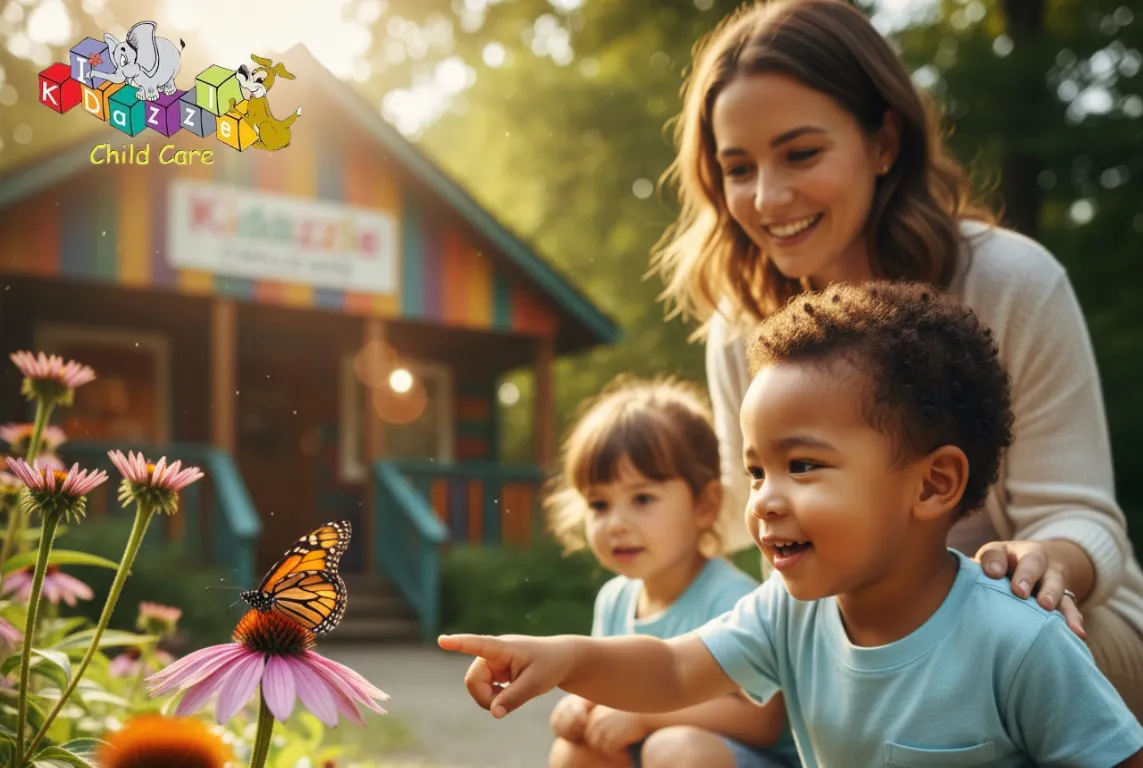
KIDAZZLE: Nurturing Curiosity Through Wonder at Home

The Science of Wonder: Turning Everyday Moments into Learning Adventures
Have you ever watched a child stare at raindrops on a window or turn a cardboard box into a spaceship?
That’s not just imagination — it’s learning in motion.
At Kidazzle Childcare, we call this the science of wonder.
It’s what happens when curiosity, emotion, and exploration collide — forming the foundation for lifelong learning.
Wonder isn’t something we have to teach children — it’s something we have to protect.
Why Wonder Is the Brain’s Favorite Learning Tool
When your child is fascinated by something — a butterfly, a puddle, a sound — their brain lights up like fireworks.
Wonder triggers dopamine, the brain’s reward chemical, making children want to keep learning.
In that moment, the brain isn’t just observing — it’s:
Linking cause and effect (“Why did the leaf move?”)
Building focus (“I want to see it again!”)
Developing emotional memory (“That was amazing!”)
That’s how play turns into comprehension — and curiosity turns into knowledge.
Also read: The Power of Questions: Why “Why” Is the Smartest Word in Your Child’s Vocabulary
How Kidazzle Turns Wonder Into Learning
At Kidazzle, our classrooms are designed to make curiosity bloom.
Every sensory station, story circle, and art corner is an open door to discovery.
We don’t rush through moments of wonder — we expand them.
When a child asks, “Why is the paint dripping?” we don’t just explain — we explore.
Here’s how our teachers nurture that spark:
Ask open-ended questions: “What do you notice?” “How do you think it works?”
Turn mistakes into discoveries: A spilled cup becomes a water experiment.
Connect emotion to learning: “That was surprising — how did that make you feel?”
By honoring curiosity, we build intrinsic motivation — the desire to learn for the joy of learning itself.
Continue exploring: Tiny Thinkers: How Problem-Solving Starts Before Kindergarten
Wonder at Home: Everyday Magic You Might Be Missing
You don’t need fancy toys or screens to spark learning — the best adventures start in your home or backyard.
Try these small, science-backed ways to grow curiosity every day:
Pause before answering. Let your child guess or test their theory first.
Use “I wonder” language. It invites thinking without demanding right answers.
Let play get messy. Discovery often comes with dirt, giggles, and surprises.
Go on “noticing walks.” Talk about textures, colors, smells — all build sensory awareness.
Because every “look!” and “what’s that?” is your child’s brain saying, teach me more.
See related: Healthy Minds, Happy Bodies: How Nutrition and Movement Boost Early Learning
Building a Culture of Curiosity — The Kidazzle Way
In a world that moves fast, wonder slows us down — in the best way.
It helps children see beauty in the details, think critically, and stay open to learning.
That’s what makes Kidazzle classrooms different.
We don’t just teach letters and numbers — we teach children how to see.
Because when a child keeps wondering, they keep learning — not just for school, but for life.
At Kidazzle, curiosity isn’t a phase — it’s a foundation.